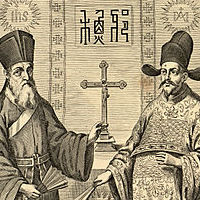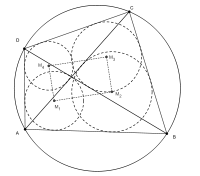



- Task:
- Learn a new theorem in elementary geometry and communicate it in written form.
- Minimum requirements:
- Each student will focus on a different geometric result.
- The written document will introduce/motivate, correctly state, and
prove a theorem. It will also include at least one interesting
example, construction, or special case illustrating the theorem. The
article will be as self-contained as possible. The new document must
be typed, be at most eight pages in length (with one inch margins and
a 12pt font), and be available in PDF format.
- Assessment and deadlines:
- Project grades will be computed as follows:
- Advice:
- Here are some suggestions on how to present mathematics:
Halmos on writing and
Kleiman on writing.
- Comments:
- By design, this assignment is very open-ended. Students are strongly
encouraged to explore examples. Students are also encouraged to
formulate, test, and prove their own conjectures. Here are some questions
that you may want to consider:
- What was the historical context or original motivation for your theorem?
- Can you give more than one proof of your theorem?
- Does your theorem have any interesting specializations or
important applications?
- Can your theorem be generalized?
- Is your theorem valid in all geometries?
- Potential topics:
- The following results are natural candidates:
The following references also contain numerous project possiblities:
- Oene Bottema, Topics in elementary geometry, Second
edition, Springer, New York, 2008.
- H.S.M. Coxeter and S.L. Greitzer, Geometry revisited,
New Mathematical Library 19, Random House Inc., New York, 1967.
- Robin Hartshorne, Geometry: Euclid and beyond, UTM,
Springer-Verlag, New York, 2000.
- David Hilbert, The Foundations of Geometry, Gutenberg eBook, 2005.
- Alexander Ostermann and Gerhard Wanner, Geometry by Its
History, Springer, New York, 2012.




